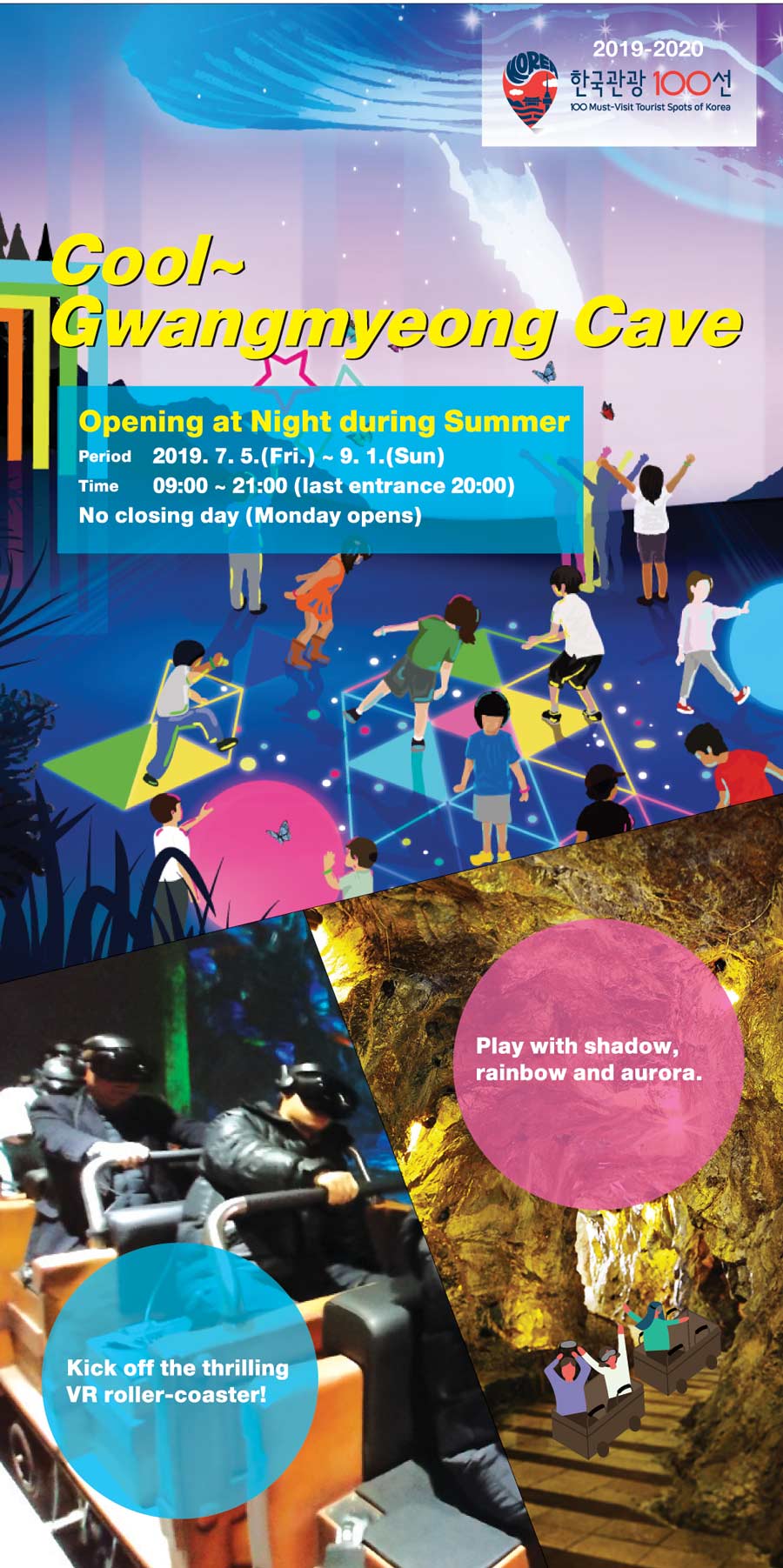INSIGHT
Schauplatz: What a "blue pony" can trigger off in Koreans.
August 29, 2022

There is hardly a better way than the Jeju Olle Trail when it comes to escaping the "balli-balli" culture and everyday stress.
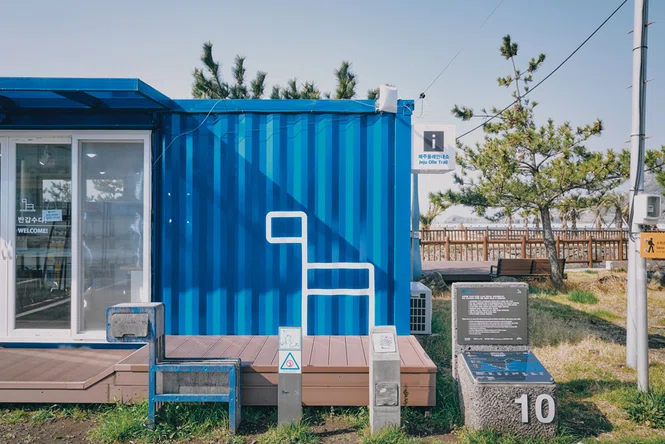
Jeju Olle Trail. Courtesy of Jeju Olle Trail
Summertime is vacation time. A central setting is the volcanic island of Jeju, which enjoys great popularity among many Koreans, not only during the vacation season. The island with the extinct volcano Hallasan shapes the image of Jeju and is and at the same time with a height of 1950 meters the highest mountain in South Korea. Jeju is located in the center of Northeast Asia and has important geographical connections with China, Japan and Southeast Asia. And like South Korea, Jeju is accessible only by boat or plane.
Jeju is a natural paradise, which was inscribed on the UNESCO World Heritage List as a Natural Heritage Site in 2007. Therefore, it is not surprising that over two million nature enthusiasts travel to this place of recreation every year. Especially in the summer months, when the heat in big cities like Seoul becomes almost unbearable, many Koreans escape to the island. The figures speak for themselves: the Seoul - Jeju route is the world's busiest air route. In 2018, it counted over 14 million passengers!
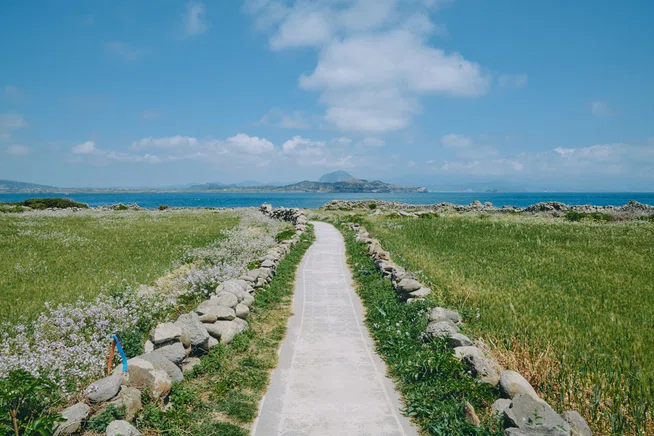
Beautiful landscapes and views of the sea invite hours of hiking. | Courtesy of Jeju Olle Trail
Jeju visitors, in addition to the sea, the many natural sights and golf courses, have also discovered the "Jeju Olle" for several years. Jeju Olle is a circular hiking trail, which is very popular and popular. Hikers can choose from 425 kilometers of trails, divided into 21 routes along the coast, and 5 routes on the neighboring islands.
As a non-profit organization, the Jeju Olle Fundation operates and manages the Jeju Olle Trail solely with private donations, corporate sponsorships and souvenir sales without government subsidies or entrance fees. The Olle Trails and the Olle Foundation were started by Jeju-raised Korean Myung Sook Suh in 2007.
The Jeju Olle Trail takes visitors not only through scenic areas such as coastal areas, forests and Jeju Oreum (small, extinct volcanoes), but also through villages and traditional markets where it is easy to talk to local people.
Also impressive are the different stone walls made of black basalt, which the people of Jeju Island have built for different purposes and are of cultural and historical importance.
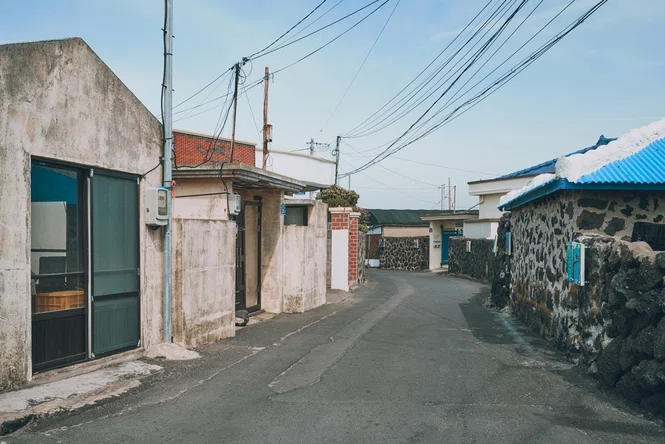
Olle trails will lead us through traditional villages… | Courtesy of Jeju Olle Trail
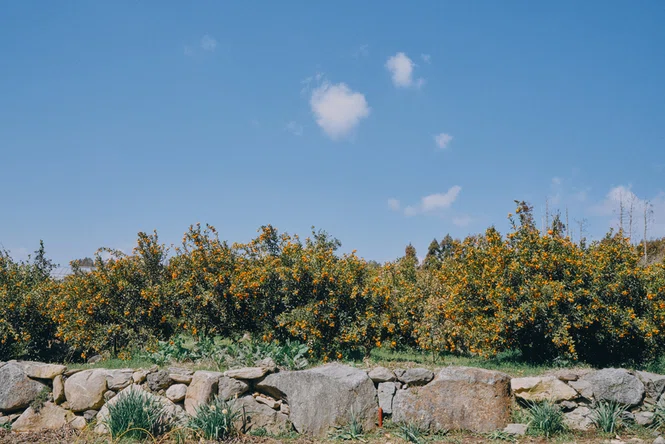
…passing tea bushes and organ groves… | Courtesy of Jeju Olle Trail
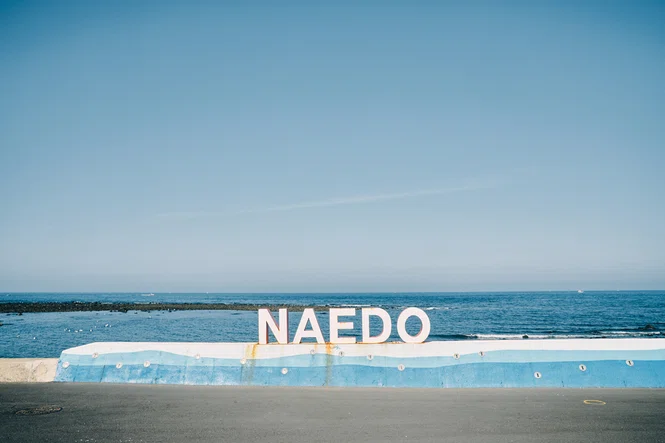
…and along the coast. | Courtesy of Jeju Olle Trail
If you want to taste local specialties, you can feast on fresh seafood along the trails or taste snacks prepared by local farmers. Exploring Jeju on the Olle Trails is a new way of traveling. You'll be on foot and get to place you can't reach by rental car or bicycle and get to know the real Jeju at the same time. And most importantly, you can leave the stress of everyday life behind and escape the typical Korean "Balli-Balli" (fast, fast) culture. A true relaxation.
And again and again, you are remembered that you are on a volcanic island. | Courtesy of Jeju Olle Trail
Orange-blue markings show the way on the Olle Trails. | Courtesy of Jeju Olle Trail
The symbol for Jeju Olle is a blue pony, which is called “Ganse”. The name has its root in the Jeju dialect “Gansedari “간세다리, which means lazy person. One of the philosophies of the Jeju Olle Trail is to take the “goose sedari” as a model: walk slowly across the meadows, stroll and rest often. | Courtesy of Jeju Olle Trail
If you want to hike the Olle Trail, you can get information on the very professionally designed webpage. The routes on the trail are described in detail. In addition to information about the route, the distance and the degree of difficulty of each trail, you also get additional information about catering and accommodation options as well as other valuable tips for the road. You can also visit one of the 16 Olle information centers where you can get the "Olle Passport". You need this passport if you want to get a stamp entry at defined stations on the route, at the so-called "Stamp Ganse" (blue pony stamp station). If you are ambitious, you will receive a Finnisher certificate and a medal when you complete all the trails. The trails are open to everyone. They are signposted with trail signs all along the route and marked with the blue pony's logo, orange-blue loops. There are also some sections for wheelchair users. For Olle beginners and those who do not want to do the trail alone, there is the "Mate Program". In this, guests are accompanied by a local Jejuian (Akajabong) on one of the agreed upon routes.
You can get an Olle Trail stamp at the “blue pony”. | Photographer Daniel Thomas Faller
More than 600,000 visitors come to Jeju Olle Trails every year.
One of them is Teuk Kim, whom we met at the Jeju Olle Tourist Center in Seogwipo. He has covered more than 437 kilometers in two weeks, receives the finisher diploma as well as a medal, and is inducted into the “Hall of fame”. Congratulations! | Photographer Daniel Thomas Faller
Jeju Olle, an island experience of a special kind, where slow travel is celebrated slow walking and the way is the goal.
This article was written by Daniel Thomas Faller | Schauplatz Korea Magazine
Link to article: click here
About Schauplatz Korea Magazine
Schauplatz Korea Magazine is not just an ordinary online magazine. People and their stories are in our focus. We are curious about places we visit, open to people we meet, and excited about what we see. We report unvarnished and real.
Website: www.schauplatz-korea.com
Contact: connect@schauplatz-korea.com


